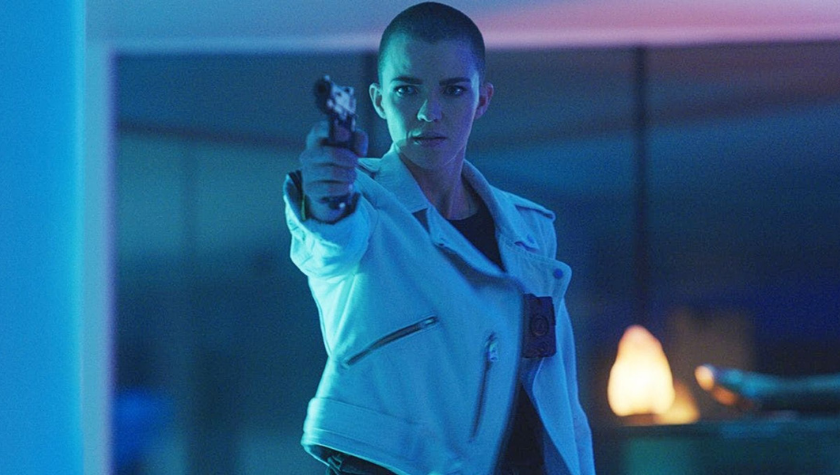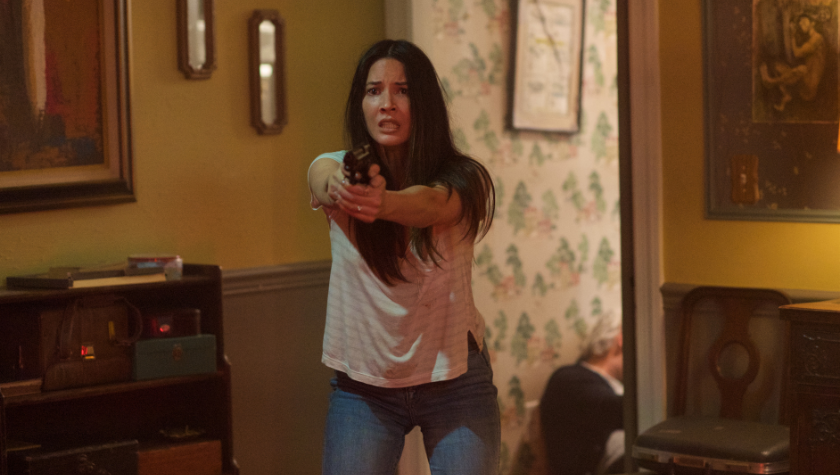‘Thirteen Lives’ writer on turning true stories into emotional narratives
October 3, 2022
For over 40 years, William Nicholson has been writing screenplays, two of which garnered Oscar® nominations. His latest film Thirteen Lives matches him up with Academy Award-winning director Ron Howard in a film delivering an emotional adventure as English divers are tasked with saving the lives of a soccer team trapped in a flooding cave.
The story is based on the true story of 12 Thai soccer players and their coach who explore a cave just as the monsoon rains envelope the region. Nicholson didn’t start on the movie. In fact, the movie was originally planned to be a limited TV series with another director attached. When he was asked to join the project, Nicholson didn’t even know much more than the average person about the harrowing 2018 rescue.
When the producer sent him the research, Nicholson was astounded because it contained so many story beats already built into the reality.
“I could see an opportunity to do the thing I like to do which is create emotional storylines,” the Gladiator scribe says. “So, I said yes.”
With the enormous amount of material gathered by a hired researcher, Nicholson was then tasked with sifting through a pile of content and creating a structure. He had to decide what to include, which characters to focus on, where the ups and downs of the story were, and who to make the emotional spine of the film — he chose the divers, Rick Stanton and John Volanthen played by Viggo Mortensen and Colin Farrell, respectively.
“From the divers I met, I got a strong sense of the characters which was important to my storytelling,” Nicholson shares of his process. “Then I produced a rough version of how to tell the story which was checked with the team: the producer, the director at the time. And then I wrote a first draft.”
Even though Thirteen Lives is a true story, Nicholson had to do quite a bit of inventing within the frame of the facts, including dialogue. It’s why he believes the first draft stage is almost the most important because he knows he will be pulled back by people who know the story better than he does.
The experts of the story, particularly the Thai people, told him what would or wouldn’t be said and if he went too far. He made the changes but always ensured he could keep the heart of the story and find ways to keep the emotional through line into the characters.
Factual outlines and story beats
For Thirteen Lives, Nicholson created two outlines at the outset. One was a factual outline detailing the events in how they actually happened, and the second was a story outline to build out the screenplay.
He looked for things to switch around to create more drama, including changing the time that a Thai Navy SEALS diver died during the rescue.
“That was a real thing that happened with real consequences, you can’t be glib about that,” Nicholson states. “On the other hand, the point at which he died didn’t suit my structure. I wanted to use his death, which was very shocking for everybody, to trigger the crucial next stage in the story for the divers.”
How does a writer make a change to something as sensitive as a person’s death? Nicholson has done a great deal of writing from real life stories and has found that if people feel respected and that the filmmaker makes them look okay, they’ll be content with the changes. It’s when the writer makes them look bad that they’re going to take issue.
It was the same approach he took with the Thai government, which was criticized by how the entire operation played out. According to Nicholson, “My business was to establish what an unbelievable challenge they faced and find a way to show the complexity. You don’t want to whitewash, but you also don’t want to point a finger in a story like this.”
Working with Oscar-Winning Directors
When you hear about how Gladiator came together, it’s amazing that it became such an incredible film at all. Nicholson was hired onto the Ridley Scott-helmed epic after the film had already been shooting for four weeks.
He explains, “I came on as a production rewriter, and I was supposed to do two weeks of work to solve one problem, but it was riddled with problems, and I was on it all the way through.”
Nicholson was on set often writing five scenes ahead of what they were shooting. Under those circumstances, the writer has an unusual relationship with the film and the director.
At the time, Scott was absorbed with shooting so it was the producers, Doug Wick and Walter Parkes, who he was working with to solve problems and create scenes. Nicholson's contributions eventually garnered him a nomination for Best Original Screenplay at the 73rd Academy Awards.
Working with Ron Howard on Thirteen Lives was a different situation because the script had already been written before Howard came onboard.
“That’s normal,” Nicholson confirms. “People think directors conceive a project and develop it. No. Producers find a project, hire a writer, the writer writes an entire script which is then shopped to a director. After they come on board, they get an actor and then get the money.”
Nicholson admired Howard’s brilliance and collaborative nature. They worked on several drafts, even after shooting started, and had to rewrite scenes due to the film’s tight budget.
Writing the historical narrative
Nicholson doesn’t always get thrown onto a project with all the research available or the film already shooting. When it comes to starting from scratch, he admits that he’s very research intensive.
“I do a lot of reading, looking online for anything I can find out, such as images and so forth before I do my structure,” Nicholson says. “But in the back of my mind, from the very word ‘go’, I have an idea what is going to be the shape of the project.”
He spends months working on the research before creating the structure of his story. By then, the actual writing doesn’t take much time. He confesses he writes fast and dirty, not obsessing over what he’s doing because he likes to bring in the ones who hired him early in the process. He collects their feedback and then the rewrites start, and there could be a lot; looking back, Nicholson believes Thirteen Lives had nearly 28 drafts, although they weren’t all major rewrites, just refining.
The Key to Writing a Great Script
Nicholson believes the key to writing a great script is identifying the central emotion that you are delivering, knowing who the main character the audience will engage with and care about.
“We’re in the emotion business – you’re delivering awe or fear or wonder or laughter. That’s what you’re delivering,” Nicholson says. He adds, “And don’t get too hung up on rules of screenwriting. Don’t get hung up even on plot. I’ve seen a lot of movies where the plot is terrible but they have a character you light up about and you respond to it. I would say that’s the secret.”
William Nicholson: Screenwriter
Two Academy Award nominations is pretty impressive for someone who never wanted to be a screenwriter in the first place. Nicholson wanted to be a novelist, but when he couldn’t get money for his writing, he went to the BBC as a Journal Trainee and became a documentary filmmaker.
He spent 17 years working for the BBC, and during that time, he was getting up early and writing his novels. It wasn’t until one of his bosses wanted a script written that Nicholson gave it a try. It was considered a success so he was asked to write another one which ended up winning some awards.
Nicholson realized he was good at being a screenwriter and he was thriving in an environment where he wasn’t alone writing a novel but instead in a place where people were sticking their fingers into his work. He continued writing screenplays until his career launched and he could give up his day job.
Nicholson always finds the material that excites him and has characters that bring about emotion in himself.
"You have to connect the emotion in yourself. It's when you know it's waking you up, making you get to your desk and pound this stuff out because you want people to feel what you're feeling," Nicholson shares.
Thirteen Lives is now streaming on Amazon Prime.
Written by: Steven Hartman
Steven Hartman is an award-winning, optioned screenwriter. He was a Top 5 Finalist in Big Break’s Historical Category in 2019 and won Best Action/Adventure in Script Summit’s Screenplay Competition in 2021. He holds a Bachelor of Arts degree from Columbia College and had internships at Jerry Bruckheimer Films and Village Roadshow Pictures. Steve is a full-time writer and creative video producer by day and a screenwriter and novelist by night.



